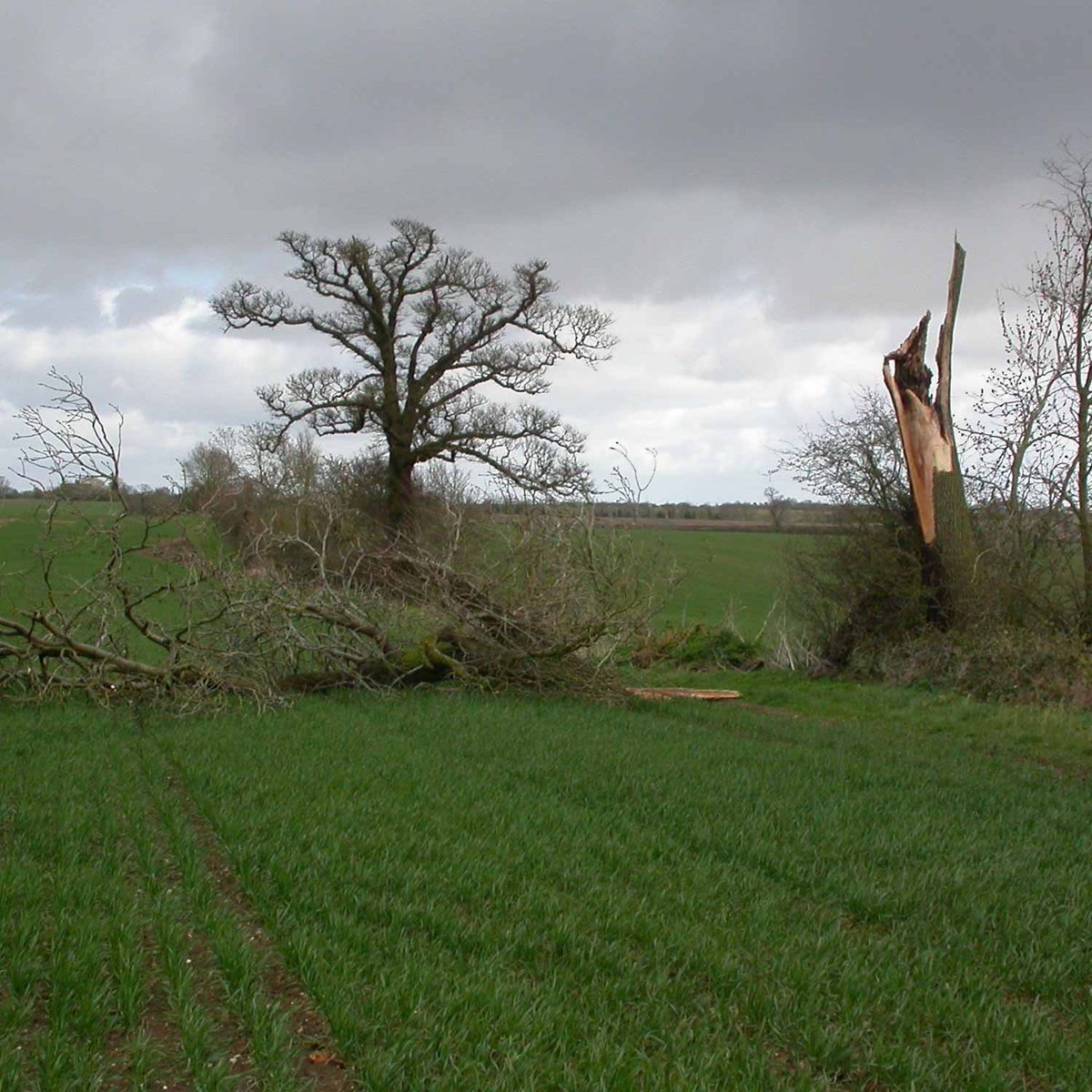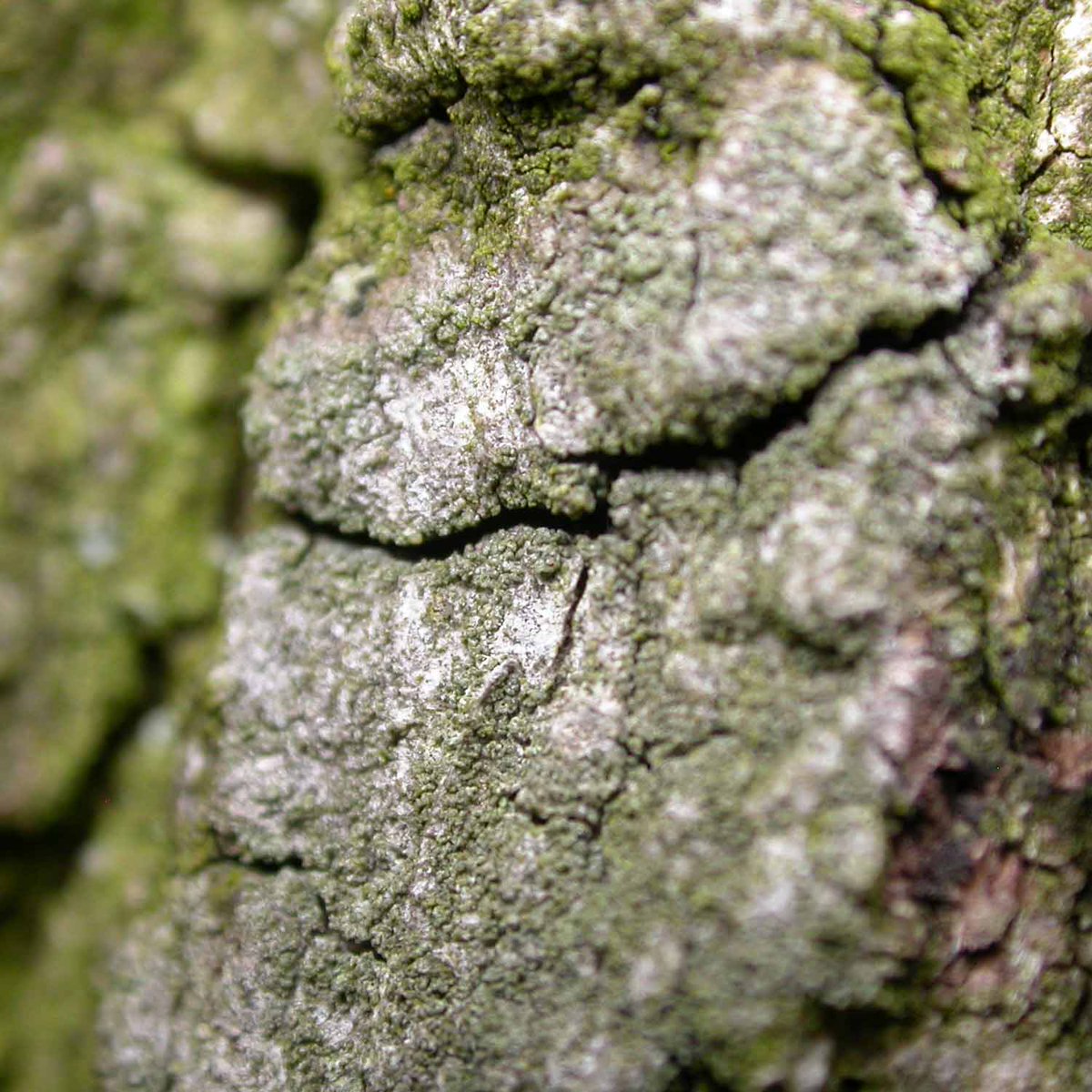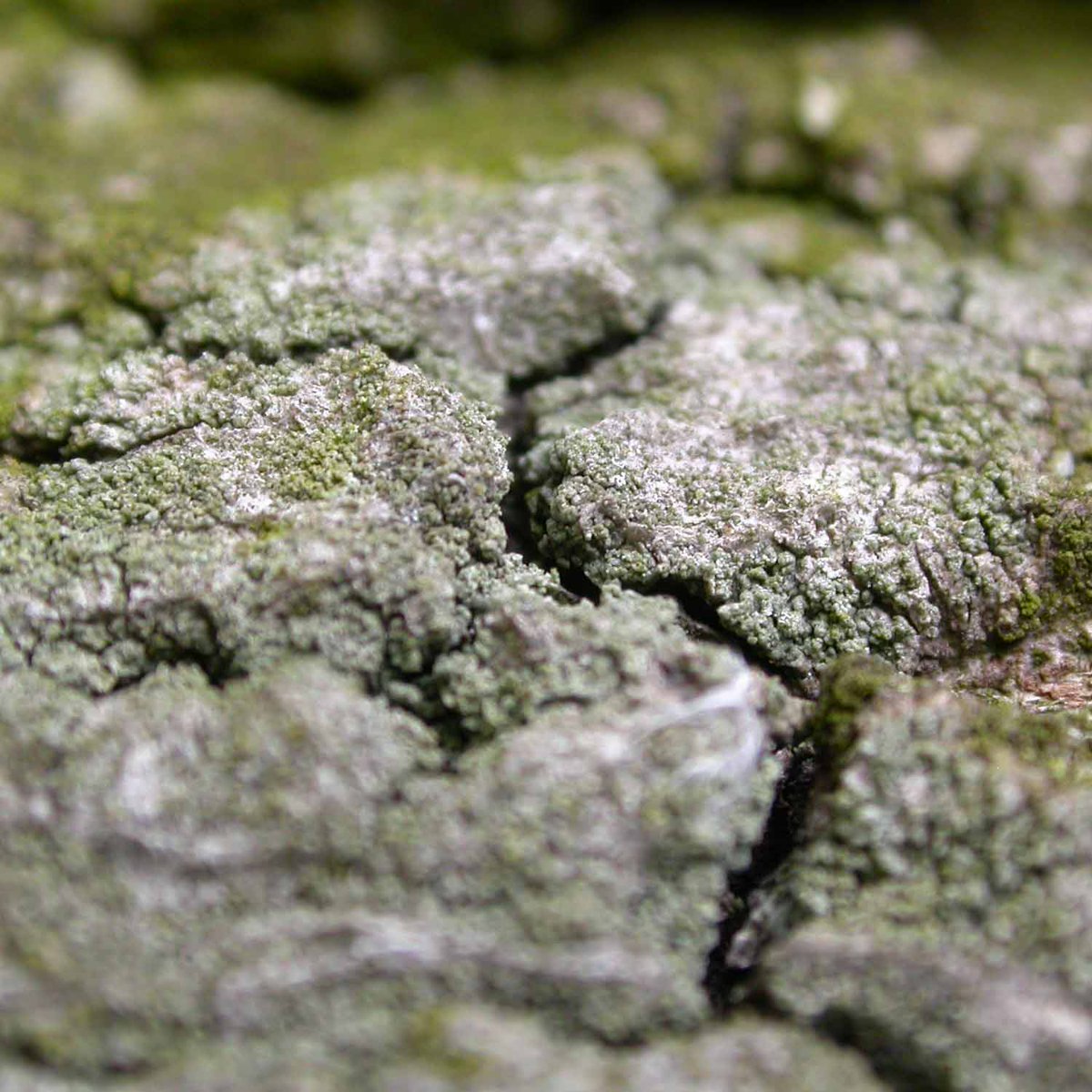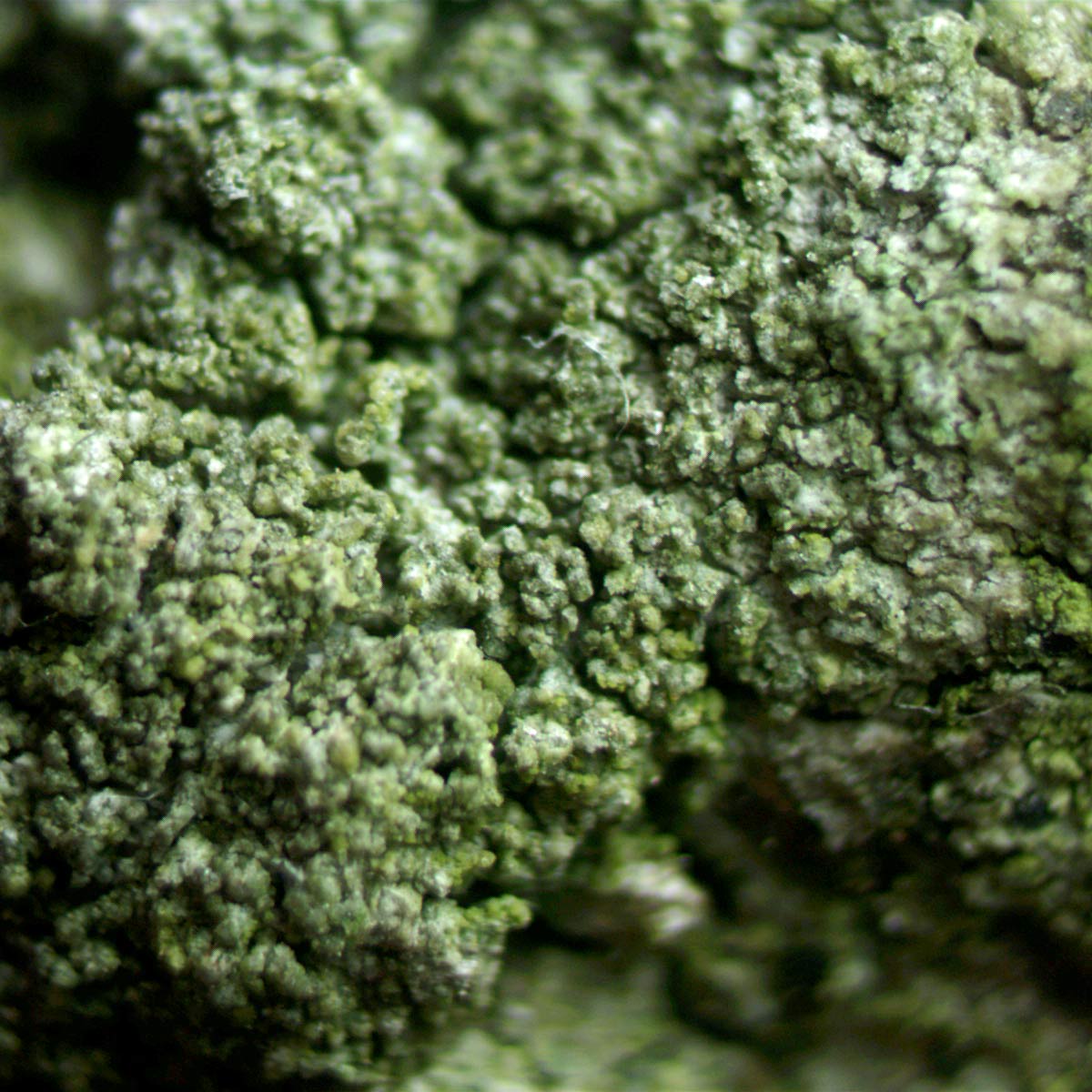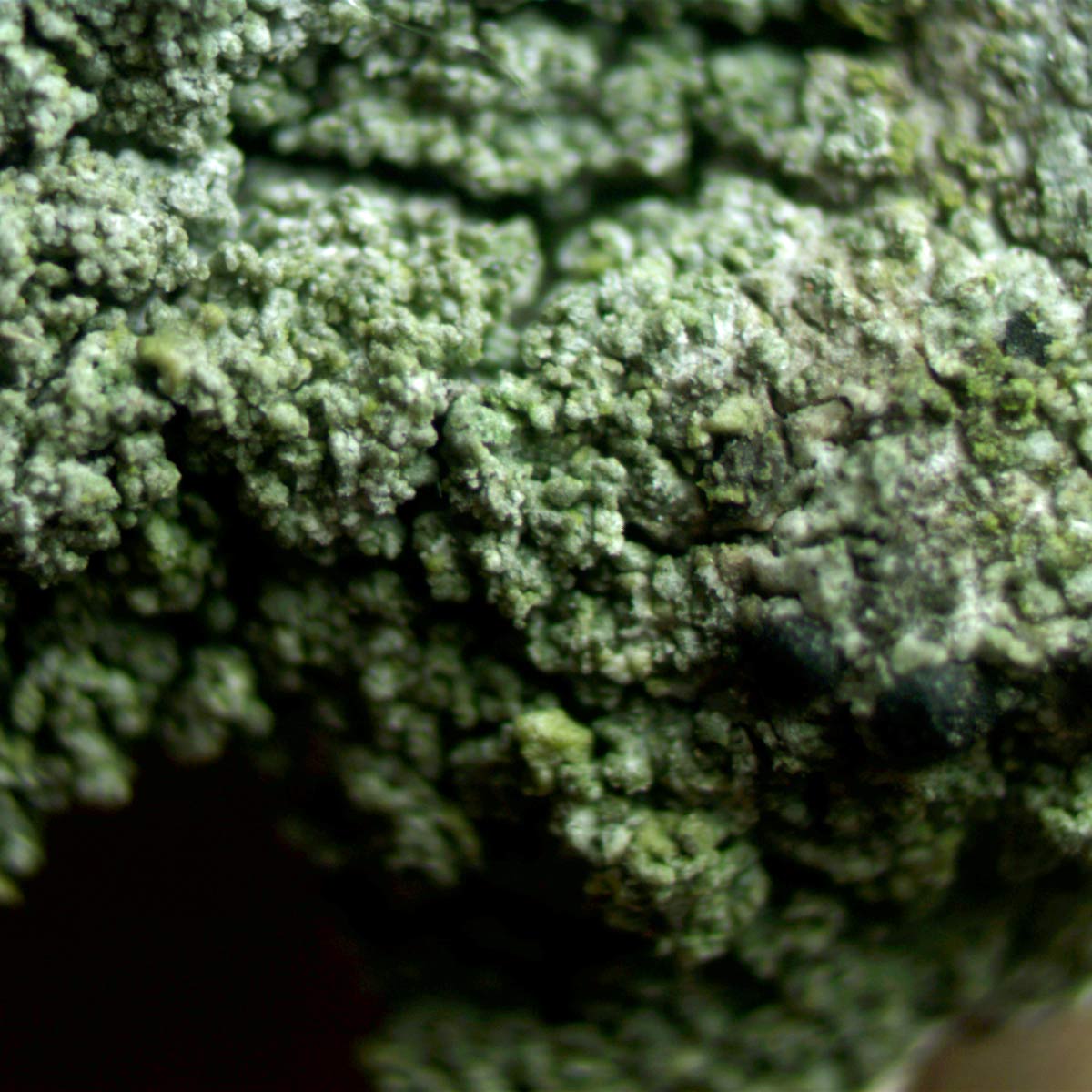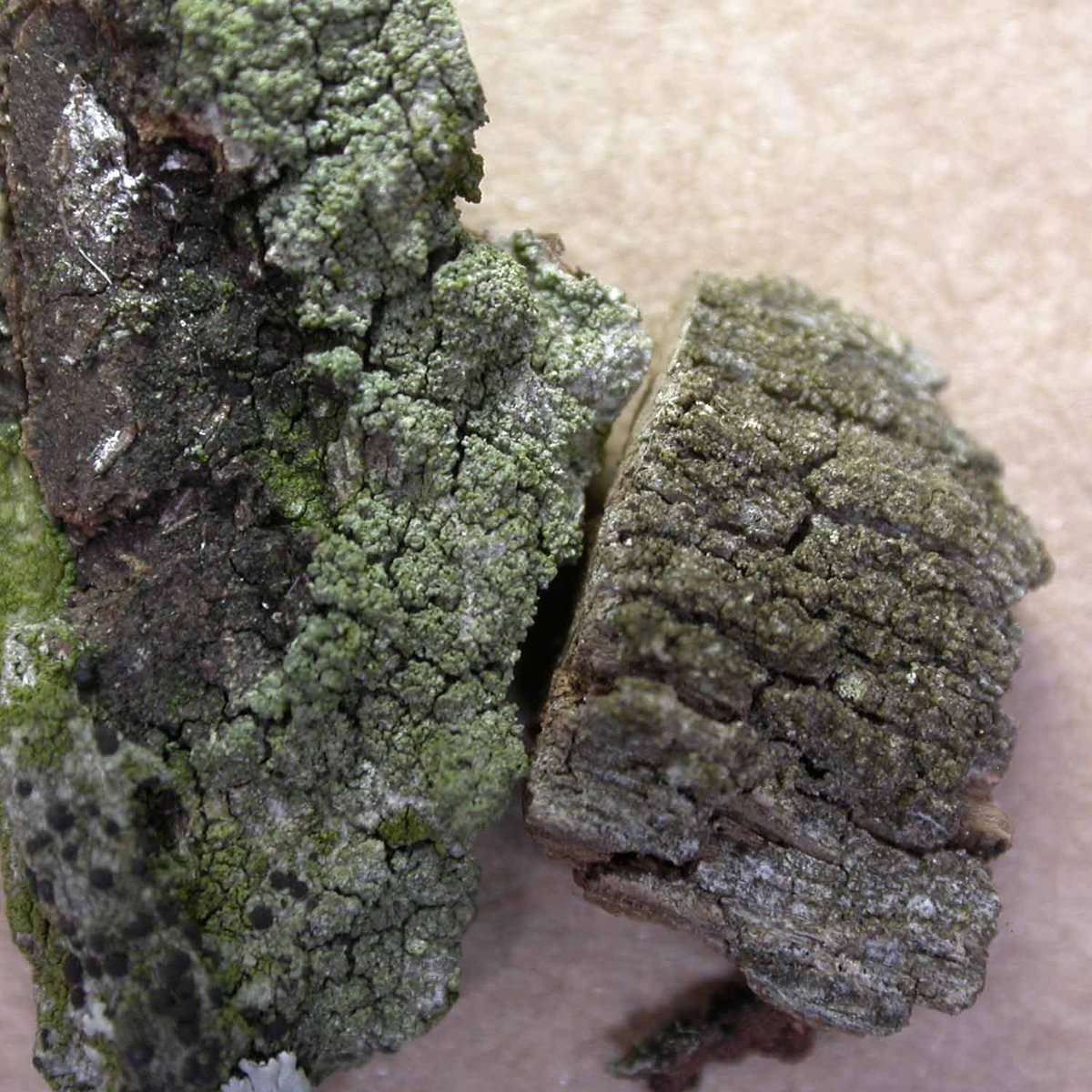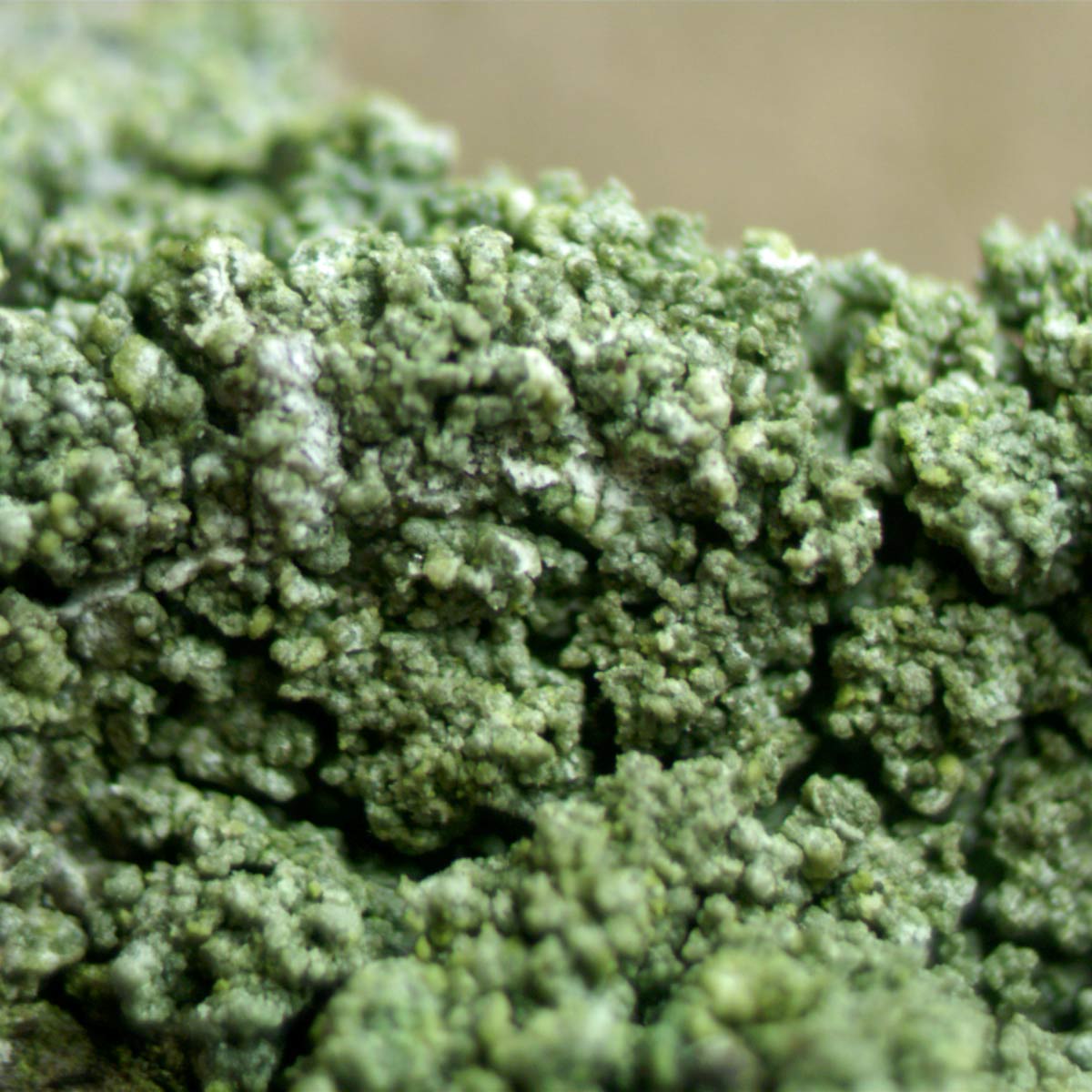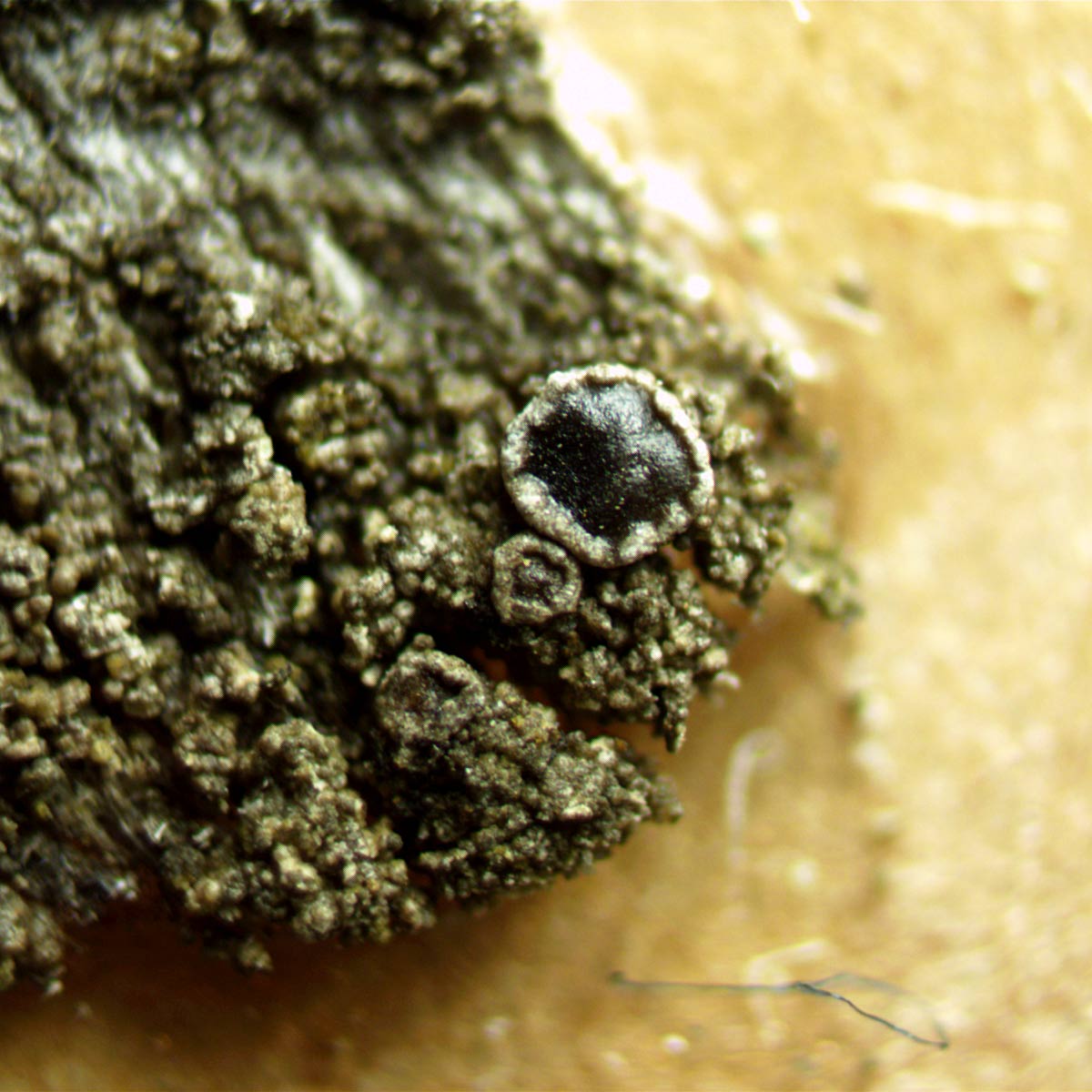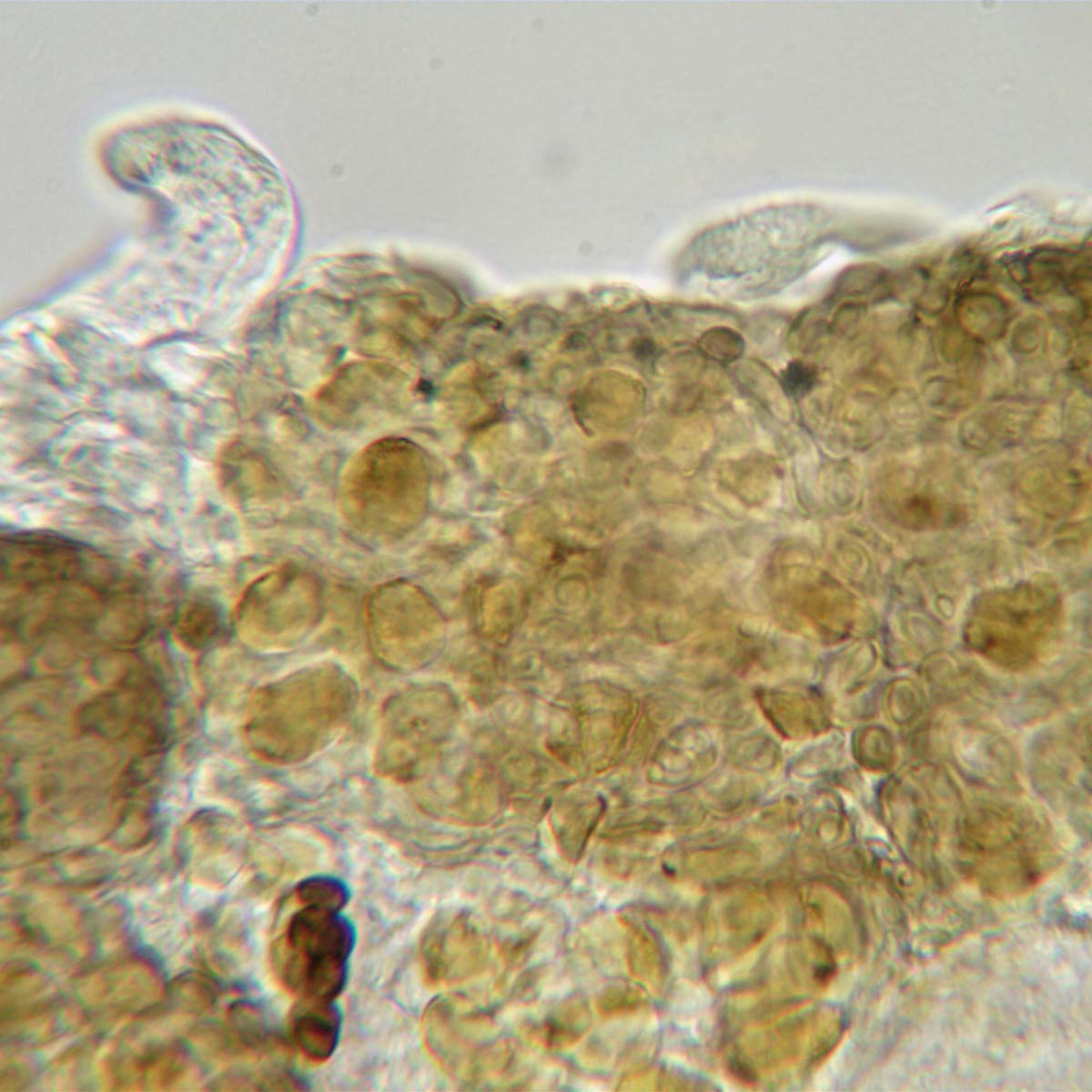I *think* I found a new lichen species for Britain this week while on my daily lock-down walk. This thread will give the story so far and explain my slight hesitation to report it as new. I was examining a wind-blown ash canopy in my local intensive arable landscape.
A squally shower forced me to shelter behind a nearby oak tree - the sort of tree which would usually not get a second glance. The shower persisted so I started to examine the trunk of this apparently unpromising tree.
The bark was partially covered in a bright algal crust. Amandinea punctate and Lecidella elaeochroma were frequent, along with several other common lichens and an unfamiliar gnarled, granular, dull, grey-green crust.
Not much to go on. Dull and minutely gnarled granular. The black apothecia in the last image belong to Lecidella elaeochroma. I collected a few bits for closer examination.
I had a slight hunch - I try to keep in touch with the sort of lichens that are found on the near Continent and not yet in Britain. This looked like a pale and slightly coarser version of Protoparmelia oleagina. Could this be P. hypotremella?
Here is a side-by-side with the putative P. hypotremella on the left, P. oleagina on the right. The latter always has that dark olive, army-green colour. I have never seen it pale greenish grey like my mystery.
Microscopy convinced me that the algae and hyphae in my mystery were almost identical to those of P. oleagina. The mystery didn& #39;t give the & #39;K+ oily& #39; reaction of the latter. All this is looking good.
The type description mentions the UV+ white of P. hypo. (supposedly not seen in P. oleag.). I am not so convinced of the difference in UV but then they have the same chemistry so perhaps there isn& #39;t really much difference in UV reaction?
My mystery has rather coarser granules than P. oleagina, some almost micro-squamulose and some of them with white edges. That all fits the type description.
It is not at all unusual in lichenology to make a potentially exciting discovery but, despite having the relevant literature, not quite certain enough to record, especially something new to Britain. My gut reaction is that it is P. hypotremella but I would really need either...
...to examine a named specimen or get it confirmed by an expert on the Continent who is familiar with P. hypotremella. A lichenologist you needs patience.
Here is P. oleagina, a lichen usually found on weathered lignum. It is sometimes fertile (P. hypotremella has never been found fertile).

 Read on Twitter
Read on Twitter